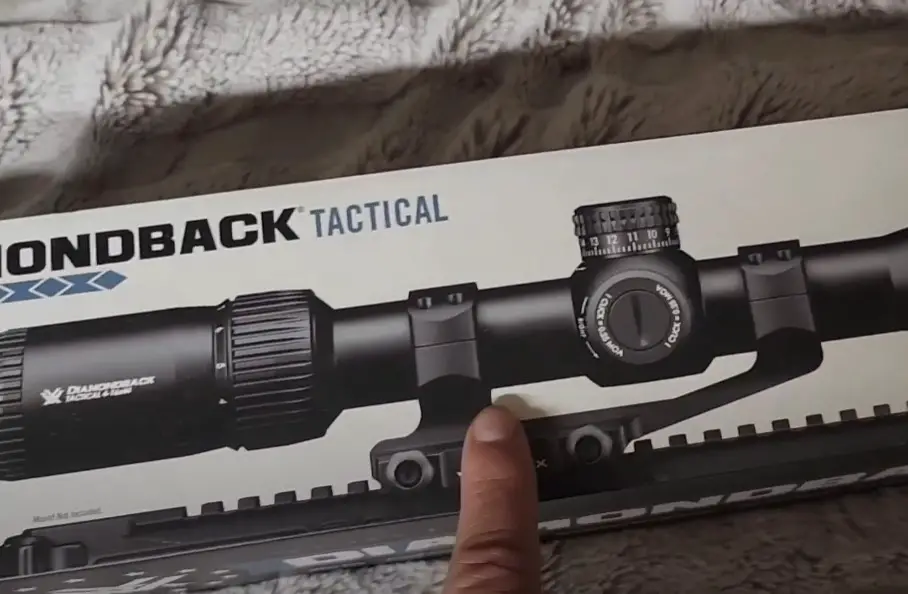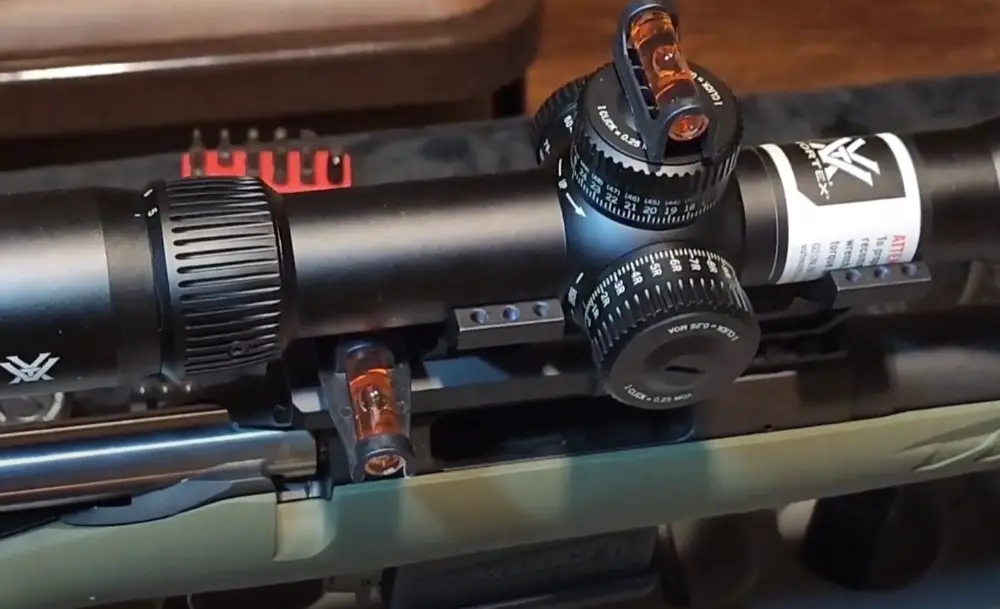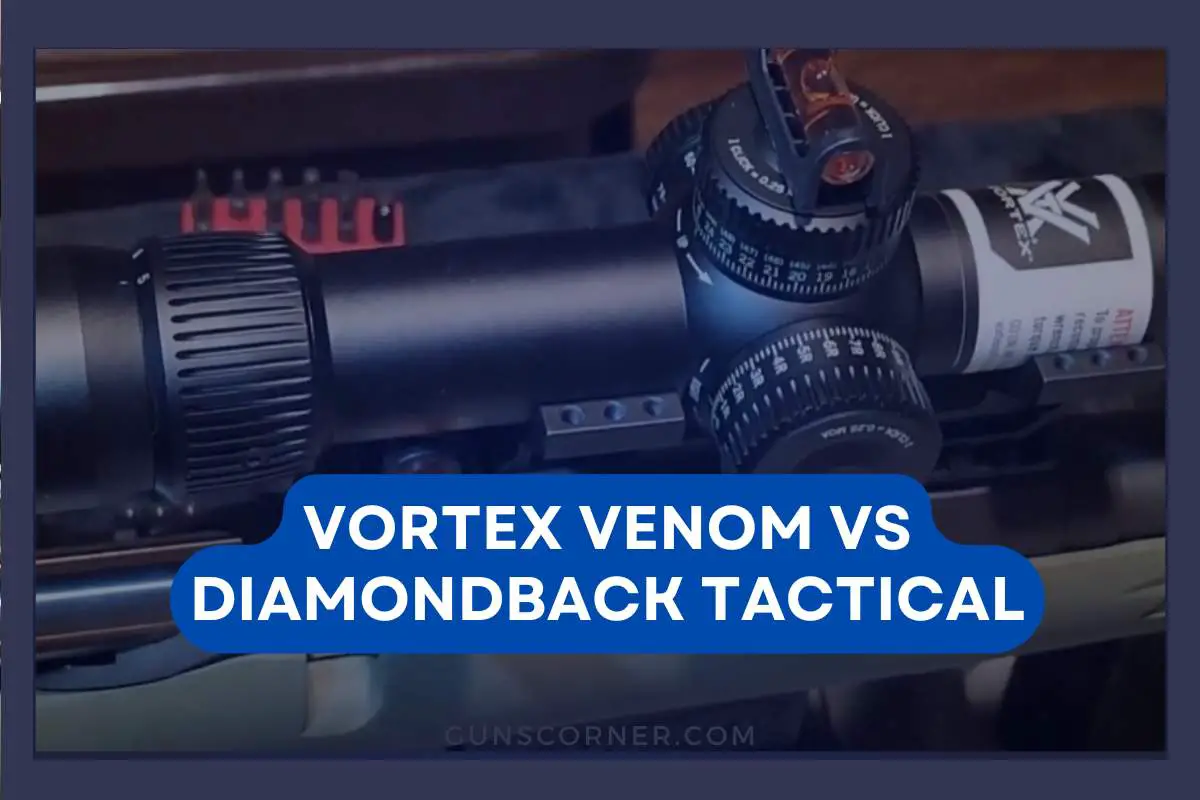Choosing the right scope for your firearm can be tricky. The Vortex Venom and Diamondback Tactical are two popular options that offer different features for shooters. Both scopes come from Vortex Optics, a well-known brand in the shooting world.
The Vortex Venom is a compact sight that works well for various shooting styles. It has a simple design and is easy to use. The Diamondback Tactical, on the other hand, is made for long-range shooting. It has more advanced features that help with accuracy at greater distances. The best choice between the Vortex Venom and Diamondback Tactical depends on your shooting needs and goals.
These scopes differ in size, weight, and how they work. The Venom is smaller and lighter, making it a good fit for quick target acquisition. The Diamondback Tactical is bigger but offers more precise adjustments for long-range shots. Both have good glass quality, but they serve different purposes on the range or in the field.
Key Takeaways
- The Vortex Venom is compact and versatile, while the Diamondback Tactical excels at long-range shooting
- Both scopes offer good optical quality, but differ in size, weight, and features
- Your choice should match your specific shooting needs and the type of firearm you use
Overview of the Vortex Venom and Diamondback Tactical
The Vortex Venom and Diamondback Tactical are two popular riflescope options from Vortex Optics. These scopes offer different features and specifications to meet various shooting needs.
Key Features of Vortex Venom
The Vortex Venom is known for its wider field of view and improved turrets. It has a 34mm main tube, which provides more internal adjustment range compared to smaller tubes.
The Venom offers a zero stop feature, allowing shooters to quickly return to their original zero point. This is especially useful for long-range shooting and competitions.
Vortex Venom scopes typically have a longer overall length, measuring around 15 inches. This can provide better light transmission and image clarity.
The optical quality of the Venom is generally considered superior to the Diamondback Tactical. It offers brighter and clearer images, especially in low-light conditions.
Key Features of Diamondback Tactical
The Diamondback Tactical is known for its excellent performance at a more budget-friendly price point. It features a 30mm main tube, which is slightly smaller than the Venom but still provides good durability and adjustment range.
This scope offers first focal plane (FFP) reticles, which change size as the magnification is adjusted. This allows for consistent holdovers and rangefinding at any magnification.
The Diamondback Tactical has a slightly shorter overall length, typically around 14 inches. This can be beneficial for rifles with limited mounting space.
While not as advanced as the Venom, the Diamondback Tactical still provides clear optics and reliable performance. It’s a popular choice for shooters looking for good quality at a more affordable price.

Optical Quality and Performance
The Vortex Venom and Diamondback Tactical scopes differ in their optical performance. These differences impact clarity, brightness, and low-light capabilities.
Lens Clarity and Reticle
The Vortex Viper PST, which is similar to the Venom, offers better resolution and clarity compared to the Diamondback Tactical. This means sharper images and cleaner sight pictures for shooters.
The Venom’s lenses likely provide crisper views of targets and surroundings. Its reticle may appear more defined against various backgrounds.
In contrast, the Diamondback Tactical might have slightly less crisp optics. However, it still delivers good clarity for its price point.
Both scopes use quality glass, but the Venom’s higher-end components give it an edge in this area.
Low Light Performance
When it comes to low light situations, the differences between these scopes become more apparent.
The Venom, with its superior optical quality, likely gathers more light. This results in brighter images during dawn, dusk, or overcast conditions.
Shooters using the Venom may be able to extend their effective shooting time in dim lighting. The scope’s better light transmission can help maintain a clear sight picture for longer periods.
The Diamondback Tactical, while capable, may not perform as well in very low light. Its images might appear slightly darker or less defined as light fades.
Both scopes offer decent low-light performance, but the Venom has a noticeable advantage in challenging lighting conditions.
Build Quality and Durability
The Vortex Venom and Diamondback Tactical scopes are built to last. They offer solid construction, weather resistance, and strong warranties. These features ensure reliable performance in various conditions.
Material and Construction
The Vortex Venom uses aircraft-grade aluminum for its main tube. This material provides strength without adding excess weight. The Diamondback Tactical also uses high-quality materials in its construction.
Both scopes feature precision-machined parts. This helps maintain accuracy and consistency during use. The Venom has a slightly more compact design, making it versatile for different firearms.
The Diamondback Tactical has a larger 30mm main tube. This can offer improved light transmission and durability. Both scopes use multi-coated lenses to enhance image quality and protect against scratches.
Weather Resistance and Ruggedness
Vortex designs both scopes to withstand harsh conditions. They are waterproof, fogproof, and shockproof. This ensures clear vision and reliable performance in various environments.
The scopes use O-ring seals to keep out moisture and dust. They are also nitrogen purged to prevent internal fogging. This makes them suitable for use in rain, humidity, or cold weather.
Both models can handle recoil from powerful firearms. The Venom’s compact size may give it a slight edge in impact resistance. The Diamondback Tactical’s larger body provides additional protection for internal components.
Manufacturer Warranties
Vortex backs both the Venom and Diamondback Tactical with their VIP warranty. This lifetime warranty covers any defects in materials or workmanship. It applies to the original owner and is fully transferable.
The warranty includes repair or replacement at no cost to the owner. This coverage extends to damage from normal use. Vortex does not require a warranty card or proof of purchase for service.
This strong warranty adds value to both scopes. It shows Vortex’s confidence in their products’ durability. Owners can use their scopes without worry, knowing they’re protected against potential issues.

Mounting and Compatibility
The Vortex Venom and Diamondback Tactical scopes have different mounting systems and work with various firearms. Proper mounting is key for accuracy and performance.
Mounting Systems
The Vortex Venom uses a Picatinny rail mount. This system allows for quick attachment and removal. It’s popular on many modern rifles and pistols.
The Diamondback Tactical needs scope rings. These attach to a Picatinny rail or directly to the rifle receiver. Ring height matters for proper eye alignment.
Vortex offers compatible rings and bases for both scopes. Quality mounting hardware is important for maintaining zero and durability.
Firearm Compatibility
The Venom works well on pistols and rifles. Its compact size suits handguns and AR-style platforms. The bright red dot is fast for close-range shooting.
The Diamondback Tactical is made for rifles. Its larger size and magnification range fit bolt-action and semi-auto rifles. It’s good for long-range precision shooting.
Both scopes can handle recoil from most common calibers. The Diamondback Tactical may be better for high-power rifles due to its robust construction.
Check your firearm’s mounting options before choosing a scope. Some guns need special mounts or adapters.
User Experience and Ease of Use
The Vortex Venom and Diamondback Tactical scopes offer different user experiences. Their adjustment mechanisms and maintenance needs affect how easy they are to use in the field.
Adjustments and Zeroing
The Vortex Venom has more consistent adjustments compared to the Diamondback Tactical. Users report that the Venom’s adjustments settle in quickly, while the Diamondback may take a couple of shots to stabilize.
Both scopes use turrets for windage and elevation adjustments. The Venom comes with a throw lever, making magnification changes faster. For the Diamondback Tactical, users need to buy a throw lever separately.
The Venom features a zero stop, which helps shooters return to their original zero quickly. This feature is not present on the Diamondback Tactical.
Maintenance Requirements
Both scopes are built to withstand harsh conditions. They have sealed O-rings to keep out moisture and dust. The lenses have special coatings that repel water and oil, making them easier to clean.
Regular cleaning with a soft cloth is enough for both models. Users should avoid using harsh chemicals that could damage the lens coatings.
The Venom’s larger 34mm tube may collect more dust than the Diamondback’s 30mm tube. This might mean slightly more frequent cleaning for Venom users.
Neither scope requires extensive maintenance beyond basic cleaning and proper storage. Their durable construction means they can handle regular use without needing frequent repairs or adjustments.
Frequently Asked Questions
The Vortex Venom and Diamondback Tactical scopes have key differences in features, price, and performance. These factors impact their suitability for different shooting applications and user preferences.
What are the main differences in features between the Vortex Venom and the Diamondback Tactical scopes?
The Vortex Venom offers 85 MOA of adjustment, while the Diamondback Tactical provides 65 MOA. This extra adjustment range gives the Venom an edge for long-range shooting.
The Venom comes with a throw lever, making magnification changes quicker and easier. The Diamondback Tactical requires a separate purchase for this feature.
How do the Vortex Venom and Diamondback Tactical scopes compare in terms of price value?
The Vortex Venom and Diamondback Tactical are priced similarly. The Venom offers some extra features like the included throw lever, making it potentially better value for some shooters.
Both scopes provide good performance for their price point, with the choice depending on specific shooting needs and preferences.
What are the pros and cons of the Vortex Venom and Diamondback Tactical when used on an AR15?
The Vortex Venom is well-suited for close-range shooting, making it a good choice for AR15s used in tactical or home defense situations. Its wider field of view aids in quick target acquisition.
The Diamondback Tactical offers higher magnification options, which can be beneficial for AR15s used in longer-range applications or precision shooting.
Can the Vortex Venom withstand heavy recoil compared to the Diamondback Tactical?
Both the Vortex Venom and Diamondback Tactical are built to withstand recoil from various firearms. Vortex designs its scopes to be durable and shock-resistant.
The Venom’s 34mm tube may provide slightly better structural integrity compared to the Diamondback Tactical’s 30mm tube.
How does the clarity and glass quality of the Vortex Venom compare with the Diamondback Tactical?
The Vortex Venom generally offers clearer glass compared to the Diamondback Tactical. This improved clarity can enhance target identification and shooting precision.
Both scopes use quality glass, but the Venom’s optical coatings may provide better light transmission and color fidelity.
What is the weight comparison between the Vortex Venom and Diamondback Tactical scopes?
The Vortex Venom is typically lighter than the Diamondback Tactical due to its more compact design. This weight difference can be noticeable when mounted on lightweight rifles.
The exact weight difference varies depending on the specific models being compared, but the Venom’s lighter weight can be an advantage for hunters or shooters who prioritize mobility.

